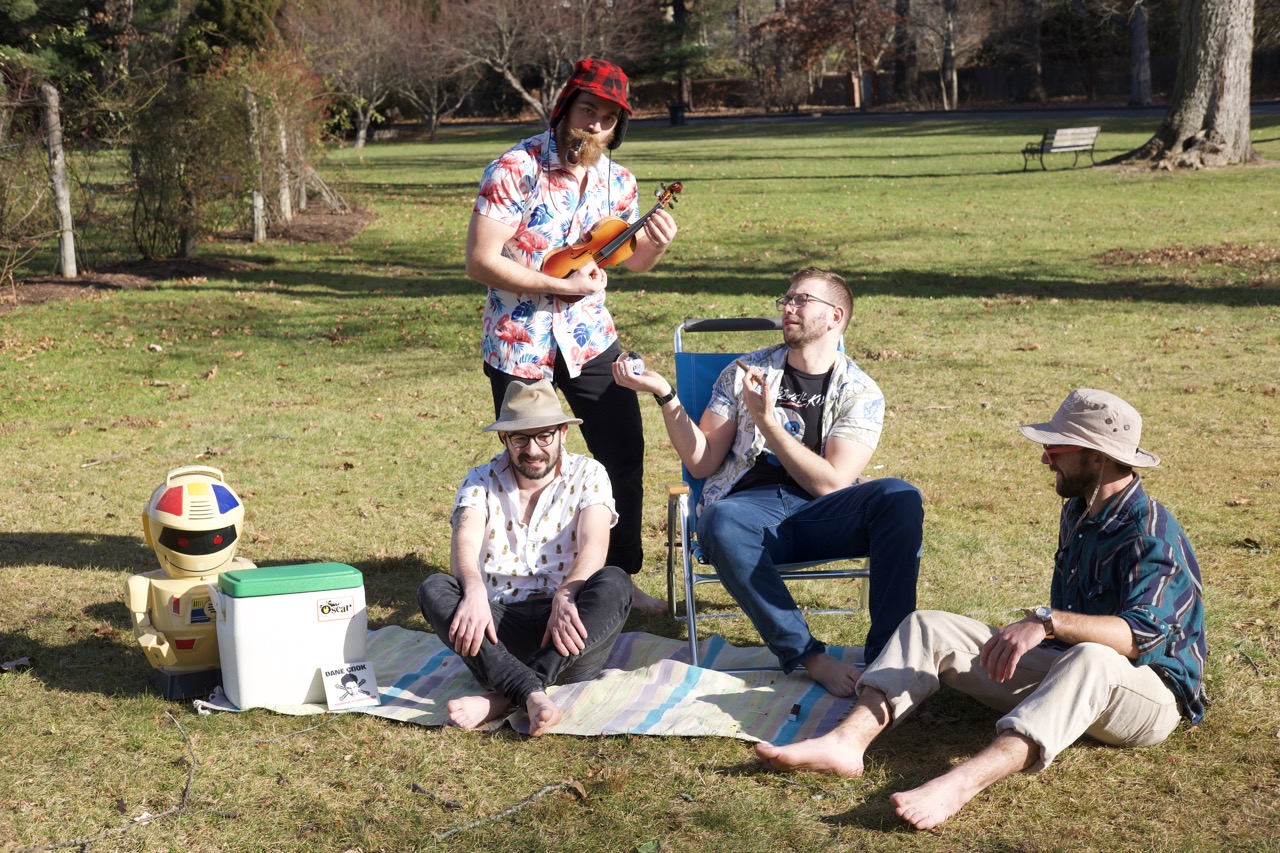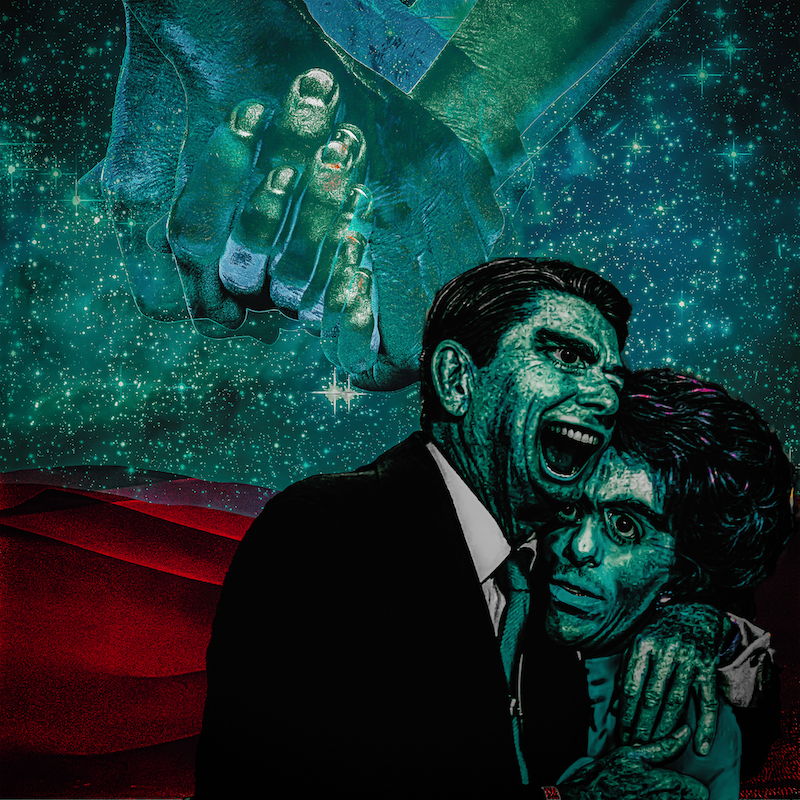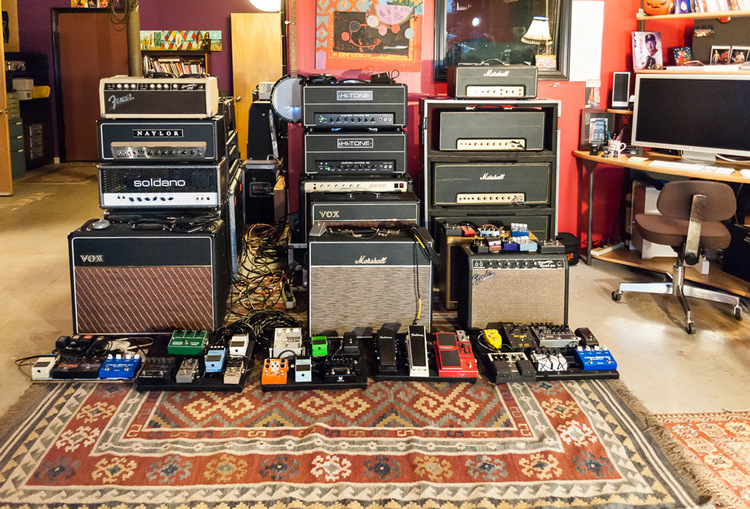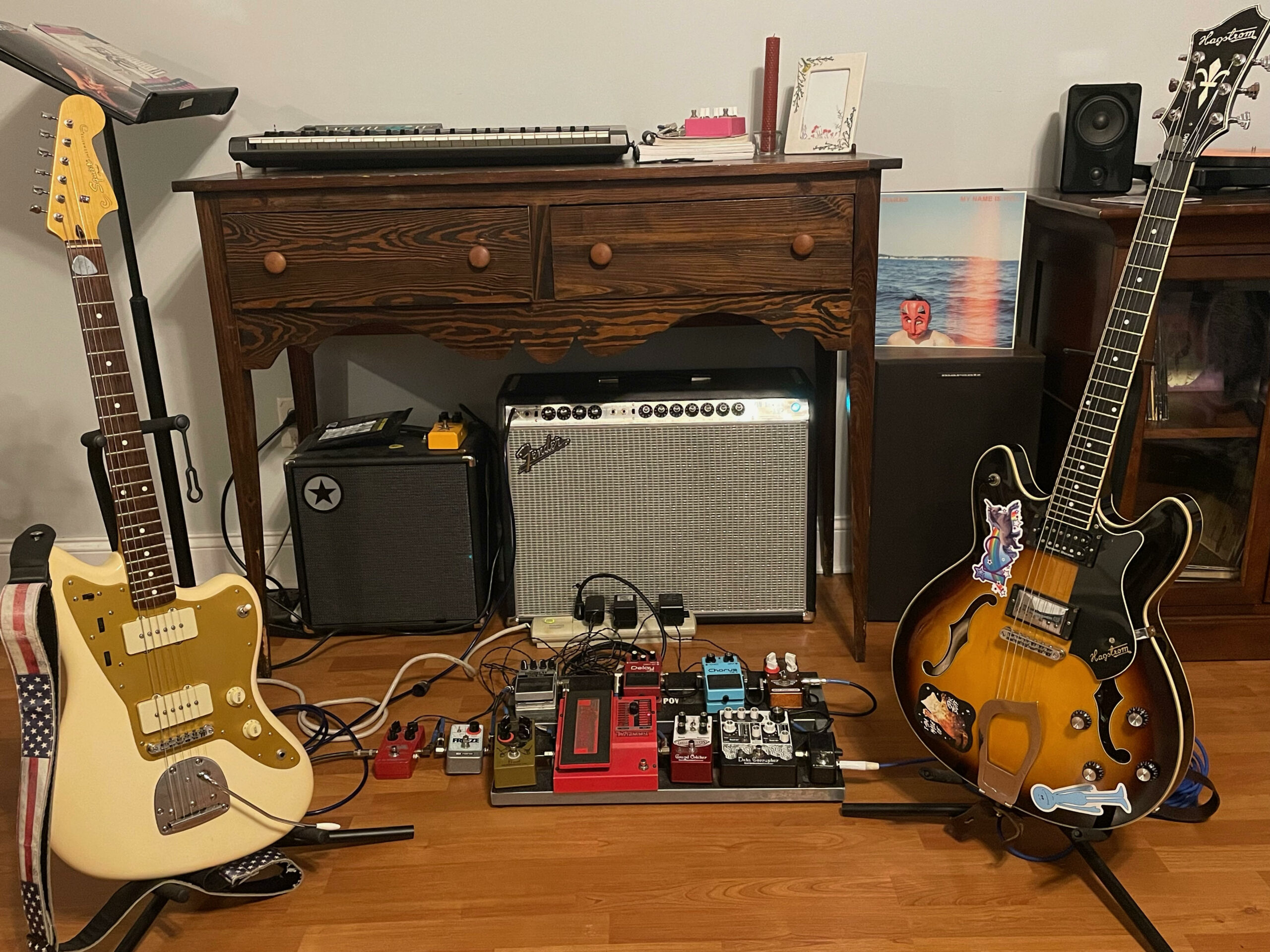
Interview: Fat Randy
We take Steely Dan extremely seriously here at Var Guitar HQ, so when New England rock band Fat Randy slid into my DMs describing their sound as “like a heavy Steely Dan”, my interest was very piqued. Fat Randy’s latest album Slow Incremental Change definitely has some of the Steely DNA – a wry sense of humor, a horn section, arrangements that go beyond the standard rock-and-roll ABA – but ultimately, their sound is very distinctive, a lot of fun, and worth checking out.
I chatted with Stephen Friedland from Fat Randy over email in the autumn of 2022.
How did Fat Randy get together?
I met Connor via my ex-girlfriend at UConn, where we all went to school. He asked me to record with him over the summer and we both agreed we wanted to make something that was noisy and nerdy and guitar pedal-centric, so we concocted a bunch of weird, fuzzy jams (djembe included) and I learned how to make wild oscillations on a delay pedal that day.
The following semester I met Anika, who wanted to start a band and played with us for a little while until she got busy with school.
Steve played a jazz gig with me for rich people and I knew he was the ideal replacement because he had the chops and was also enough of a nerd to be amenable to our pedal-tweaking ways. The three of us put our noggins together and wrote the tunes for our first album, “Reggaenomics,” which came out at the beginning of 2018. We recruited Evan, Steve’s friend from high school, on sax for a couple of those songs and he was both so good and amenable to our pedal-tweaking ways that we had to convince him to stay forever.
The songs on Slow Incremental Change cover a lot of sonic ground. What would you say is the unifying thread that makes the Fat Randy sound?
Instrumentally and texturally, it’s a queasy, old wooden roller coaster where you feel like you’re going to die the entire time, but then the ride ends and you’re glad you did it anyway. I feel like even in performances where we’re really dialed in and together, there’s an inherent degree of messiness and chaos that sounds both surreal and revealingly human simultaneously.
Lyrically, and I say this with the utmost self-love (as the writer), it’s like a bad Judd Apatow movie: the humor upfront masks the deep melodrama and sadness that you’re going to mostly hear about. Our last record, “(Randy) Alex G,” was primarily a satirical “musical trojan horse” for this new album, so this kind of thread runs on both an inter- and intra-album basis.
The Slow Incremental Change cover art is pretty unique, what’s the story behind it?
I reached out to a Boston-based comedian I follow online, Dicky Stock, who also is an incredible visual artist. As has been the case with any of our releases, I like having the artist we’ve tasked with creating a cover/album design to make something inspired by listening to the record. I did mention to him that I enjoyed a surrealist picture he made of this, like, melting JFK with eyes across different parts of his body, which may explain why one of the characters looks a lot like Ronald Reagan (who is dead).

While I can’t 100% speak to his intentions, to me, the album artwork conveys an immense loneliness and weight inexorably felt by the other character on the cover, who appears broken and possibly catatonic. Sweeping hills of desert and space, invisible hands and a literal embrace of cancerous Reagan-esque forces all conspire against this character to render them as they are.
What guitar gear do you use on the record?
Where to begin! I derive a lot of my “sound” from pedals, so typically, I rely on amps that specialize in the “loud with lots of headroom” milieu. We recorded the album at Woolly Mammoth Sound in Waltham, MA (quite possibly my favorite place on earth) and had a lot of choices between amps and guitars that were, frankly, otherworldly for me.

The amp configuration I predominantly used on the record was a 1962 “Blonde” Fender Bassman; a Hi-Tone DR504 — a Hi-Watt 504 clone — and I’d swap the third depending on the context, using a 1964 Gibson Titan while running around in the cab room for feedback on a couple tracks, a Soldano Hot Rod 50 for noisier stuff, and a Dr. Z Maz 18 (I think is the model?) for a little saturation.
If I recall correctly for guitars, the first half of the record is pretty consistent in that I’m tracking pretty much exclusively with my guitar, a Hagstrom Viking, and the studio’s ’64 Jazzmaster. This covers my bases in that the guitars are both super receptive to pedals and you get that distinctive single-coil-adjacent twang from the latter and the more stately, warmer low end from the former.
In the back half of the record, which was recorded during the pandemic, I used the Hagstrom way less because I bought a used Squier J. Mascis Jazzmaster in February 2020, and that guitar rules; its pickups run so hot. The difference in innate guitar volume alone was especially stark on a song like “Moon River Pageant,” this jazz ballad where I’m mostly using a Gibson ES-135 with P-90s and the Squier for a little guitar solo. “Soup for My Family” was also recorded with mostly a Les Paul Custom.
For pedals, I consciously and repeatedly challenged myself to incorporate an Earthquaker Devices Data Corrupter into the writing because I love taking pedals that people think are too esoteric to be functional in a song and throwing them front and center, which usually just affirms how truly esoteric and dysfunctional they are. You can hear that pedal notably via the feedback and dive bombs at the beginning and ending of “Walgreens,” respectively; the bit-crushed riffs of “Steve Jobs…”; and the solo of “SmarterChild,” among other places. The Data Corrupter pairs especially well with my chorus pedal on all of these aforementioned tracks, a 1982 Boss CE-2 — it sounds like a sad robot.

Additionally, for modulation, I use an Earthquaker Grand Orbiter Phaser. It sounds great with the rate knob cranked up all the way and also pairs nicely with the CE-2 (“Walgreens”).
For fuzz/distortion, I use an Earthquaker Hoof to evoke those chunky Russian Big Muff sounds and a Mad Professor 1, which is meant to give you the Eddie Van Halen “Brown Sound.” It’s a super serrating, aggressive distortion that makes really cool, subtle modulation sounds, especially on sustained chords (“Soup for My Family”).
For delays, I’m using a 1984 Boss DM-3 and a Digitech Digidelay, the latter of which is mostly used for rapid, expressive stuttering (“Walgreens”) and reverse delay (“Connecticut”).
I abuse the Digitech Whammy, the first pedal I ever bought, in all kinds of iterations. I love pairing the 5th-up harmony with some kind of modulation and delay (also “Connecticut”) and I’ve recently been using the Detune column way more to momentarily play in some egregiously low tuning like Drop Bb (“I’m Going to Do It”).
Lastly, I used an EHX Freeze for infinite and creepy sustain tricks (“SmarterChild” and “Alice Window”).
Many thanks to Stephen for agreeing to this interview. You can keep up to date with Fat Randy on their bandcamp, Instagram, and Twitter. The band photo featured at the top of the article is courtesy Dan Deutsch.
